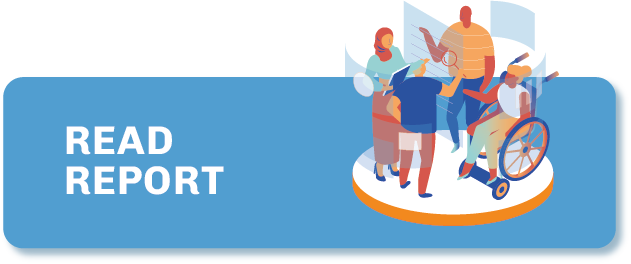Estonia
Estonia’s digital native independent media market continues to be tiny, since larger companies have acquired most small digital natives. With only 1.3 million people in the country, the fight for audiences is real. Yet, a few successes have shown that there is room for alternative digital media outlets, especially those who practise longform journalism.
GENERAL INFORMATION
Press
freedom
ranking
Internet
penetration
POPULATION
Media organisations
in the Directory
TYPE OF COVERAGE

TYPE OF ORGANISATION
GENDER OF FOUNDERS

Press freedom
Estonia ranked highly for press freedom in 2022. However, an increasing number of SLAPPs (strategic lawsuits against public participation) and similar lawsuits from private persons and law enforcement – such as a state attorney fining two journalists for publishing information about an ongoing money laundering case – have created a worrisome new trend that might prevent journalists from covering difficult issues in the future. This is especially the case for small independent media outlets that lack the resources to deal with lawsuits.
Market structure and dominance
The Estonian media market is characterised by two main media houses in the print and online space, three networks in television, and public and private radio stations. As media giants have acquired smaller outlets over the years, there are not many independent digital native outlets left. Yet, within the past five years new digital media outlets (especially those publishing longform journalism) have started to gain traction. Levila (not included in this directory) and Edasi are good examples of this trend. While the former puts a lot of emphasis on audio and video, in addition to digital longform text, the latter also focuses on creating quality quarterly paper magazines, together with paywalled online content. Most digital native outlets concentrate on a wide range of topics, with larger media houses acquiring smaller outlets to also dominate these niche markets.
How media is funded
The predominant revenue source for traditional media organisations is subscription and advertising revenue. For independent digital native organisations, however, individual contributions are predominant, together with subscriptions and advertising revenue.
The pandemic was a particularly good time for Estonian media, as people’s need for quality information increased. Additionally, people spent more time at home and found their way towards new media sources. What is perhaps even more important is that with the rise of on-demand content platforms such as Netflix or Spotify, Estonian consumers have gotten used to paying for journalism again, as noted in Re:Baltica and the Stockholm School of Economics in Riga’s Baltic Media Health Check 2020-2021.
Some smaller media organisations are also experimenting with recurring patron donations from companies to support specific sections of their websites. In such cases, the patron company’s logo is displayed on the relevant section.
Three profiles of digital native media organisations from Estonia are included in the directory.
In recent years, digital native media outlets have started trying to create new longform alternatives to traditional fast-paced media formats. Edasi is a notable example of this; its increasing readership shows there is a market for this type of content. “Edasi is a small miracle,” says its editor-in-chief Janeck Uibo. Another outlet, Estonian World, tries to offer both longform storytelling but also breaking news and practical information for Estonian expats (its content is in English).
Except for the outlet Bioneer, the organisations included in the directory are looking into paywalls and subscription models together. Edasi has shown that having a model that is mostly reliant on subscriptions is possible in Estonia.
Estonian World experiments with targeted personal donations from both private patrons as well as from companies. Bioneer, however, is keeping its content free for all, as its goal is to find a way to educate people on green living. Instead, it gets its revenue from training sessions on various topics.
Some of the media outlets are trying to explore the podcasting market, but since their resources are extremely limited, this continues to be more of a goal than a reality. This struggle appeared as a common theme while talking to the various outlets’ media leaders; they have ideas for change, but no people or time to follow through.
Estonia is a challenging market for independent media organisations, as there are only about a million Estonian speakers worldwide. As people have gotten used to paying for journalism again, outlets have found a way to try to offer alternative, quality longform content, even in a market as small as Estonia’s.
Last updated: January 2023
CREDIT FOR STATISTICS: Press Freedom statistics, RSF Press Freedom Index 2022; Internet penetration and population statistics, from Internet World Stats

